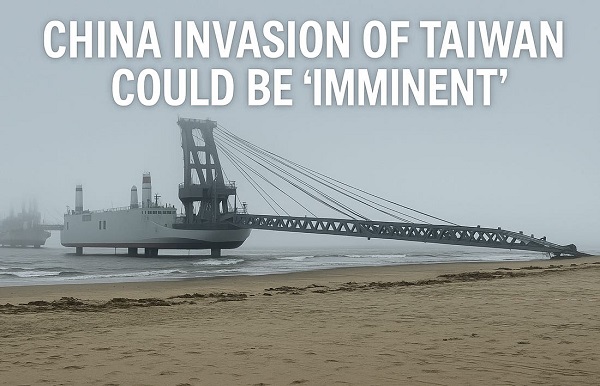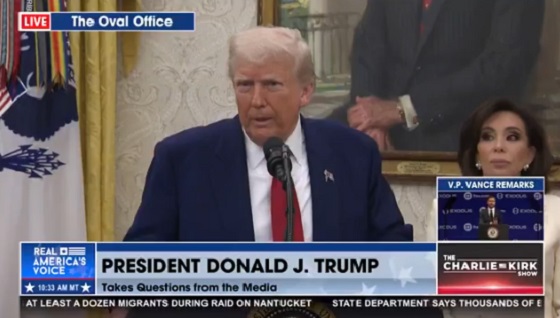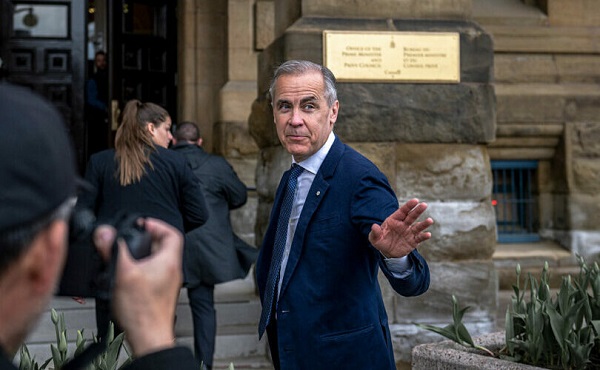conflict
Middle East War Shows No Signs Of Stopping One Year After Oct. 7 — And No Clear Path To Exit

From the Daily Caller News Foundation
By Jake Smith
The chaos of Hamas’ October 7, 2023, invasion of Israel is still being felt one year later as the broader region grapples with a conflict that has shown no signs of stopping.
Hamas Oct. 7 terrorist attacks caught Israel by surprise and resulted in the murder of approximately 1,200 people and the kidnapping of hundreds of others, including American citizens. Israel retaliated and launched a war against Hamas in Gaza, which a year later has not ended but instead spilled into the broader Middle East and drawn in other bad actors such as Hezbollah and Iran.
“We’re still stuck in Oct. 7, 2023, in one unending day of terror, of fear, of anger, of despair,” Yuval Baron, an Israeli citizen whose father-in-law is still being held by Hamas in Gaza, told Reuters.
Israeli forces have largely occupied Gaza and killed thousands of Hamas operatives, largely crippling the terrorist group’s capabilities, although it has come at great humanitarian cost to the enclave, according to Reuters. The conflict has displaced millions of Palestinians and wreaked havoc across Gaza, leaving many areas uninhabitable, Bloomberg reported.
The effort to build Gaza after the fighting ends — whenever that may be — will likely be an incredibly costly venture that could take years and require joint cooperation between several Arab states, according to Bloomberg. Millions of tons of debris will have to be cleared from the enclave while buildings are repaired or replaced.
“We thought it would be two months [of fighting] — at most,” Mohammed Shakib Hassan, a Palestinian civil servant who fled his home after Israeli forces entered Gaza last year, told The New York Times. “Twelve months have passed in front of our eyes.”
Israel, with the help of the U.S., has on several occasions made offers for a ceasefire in Gaza conditioned on the release of the remaining hostages held by Hamas and the surrender of the terrorist group, but these proposals have been rejectedmultiple times. Yayha Sinwar, the leader of Hamas who has been hiding underground in Gaza, reportedly believes that he is not going to survive the war and has zero intention of reaching a ceasefire deal with Israel at this point in the conflict, according to U.S. intelligence assessments reviewed by The New York Times.
The Biden-Harris administration has spent months brokering negotiations between Israel and Hamas and working with regional mediators to try to reach a deal, but these efforts have largely been fruitless. Though President Biden has on several occasions predicted that a ceasefire could be reached in short order, his own officials now privately believe it will be near impossible to get a deal done between now and January, the end of Biden’s term.
“They’re probably not going to get one before the election, or before January either. But that’s not on them, per se. It speaks to the difficulty of how far apart [Israel and Hamas] are,” former State Department official Gabriel Noronha told the Daily Caller News Foundation in September.
There have been various roadblocks to getting a deal done. Specifically, Israel wants to leave troops along the Gaza-Egyptian border, arguing that it would stonewall Hamas from trafficking in weapons, but Hamas has rejected this term.
Though the prospects of a deal are unlikely at this point, Israel’s war with Hamas in Gaza has largely come to a close as the terrorist group’s capabilities have been vastly diminished.
“Hamas is a shadow of its former self. Israel is going to continue to try to eradicate them, but it’s sort of a guerilla campaign. Hamas is being starved and smoked out. I suspect that you’re going to see Hamas go underground somewhat — more figuratively than literally at this point,” Noronha told the DCNF last month.
Instead, Israel has shifted much of its forces and focus away from Gaza and toward Lebanon, which houses the Iranian-backed terrorist group Hezbollah. Hezbollah is Iran’s largest terrorist group in the Middle East and has engaged in cross-fire skirmishes with Israel since last October out of support for Hamas, displacing thousands of civilians near the Israel-Lebanon border, according to NPR.
Hostilities between Israel and Hezbollah have reached a boiling point in recent weeks, as Israel has launched sweeping airstrikes against the terrorist group in southern Lebanon and killed the group’s leader in an airstrike in late September, according to The Washington Post. Israeli forces have begun ground raids against Hezbollah targets in Lebanon, in what could be the prelude to a much larger ground invasion.
The Biden-Harris Administration, along with other allies, also put forward on Sep. 26 a separate ceasefire proposal for Israel and Hezbollah, although it was seemingly ignored by both parties.
“It’s clear that Israel is determined to rid Lebanon of Hezbollah,” senior fellow at the Strauss Center and former Pentagon official Simone Ledeen told the DCNF. “They need Hezbollah to lay down their arms and surrender… the Israelis [are] really focused on getting to that objective.”
The multi-front Middle East conflict extends also to Iran, which — though it has helped orchestrate and fund the various terror attacks against Israel — made an unprecedented move in April and launched a sweeping missile strike against Israel from directly within Iran’s borders, according to the Center for Strategic and International Studies. Iran launched a similar attack against Israel last week in the form of roughly 180 missiles, most of which were intercepted by U.S. and Israeli forces.
Israel is expected to respond with an attack directly against Iran, although the timing and nature of the move is publicly unknown. The Biden-Harris administration is helping coordinate the attack with Israel, though it wants Israel to avoidgoing after the country’s nuclear facilities.
“The launch of over 180 ballistic missiles by Tehran requires a decisive reaction to prevent future attacks,” Israeli intelligence agent Avi Melamed said in a statement on Monday. “Currently, it seems that Israel is finalizing its operational plans while the U.S. prepares munitions to defensively counter any potential Iranian counterstrike.”
The conflict extends even further into Iraq, Syria and Yemen, all hotspots for other various Iranian-backed terrorist groups that have attacked U.S. and Israeli forces in the region since last October, according to Axios. Israeli forces have launched a series in those regions, too, in recent months.
Until the current Middle East conflict comes to an end, the possibility of regional peace may be too far out of reach, even as that remains a goal for other key Arab states and Western nations. Iran’s “axis of resistance” has taken severe blows since last October, according to Axios.
But Israeli forces are stretched across multiple fronts in a conflict with no clear end game, and the Israeli people seem to be growing more and more weary of the conflict; 23% of Israelis considered leaving the country in the last year, according to a recent poll cited by Axios.
“This war won’t end because nobody is willing to blink,” Thomas Nides, former U.S. ambassador to Israel, told the Times. “In the meantime, everyone is losing — hostages and their families, innocent Palestinians, Israelis displaced from northern Israel, Lebanese civilians. And it’s truly tragic.”
conflict
Beijing ‘Imminent’ Threat to Taiwan: U.S. Defense Secretary Issues Stark Warning

 Sam Cooper
Sam Cooper
“It has to be clear to all that Beijing is credibly preparing to potentially use military force to alter the balance of power in the Indo-Pacific.”
In an unprecedented escalation of U.S. military preparedness rhetoric, Defense Secretary Pete Hegseth today warned that the threat of a Chinese invasion of Taiwan—and broader actions against Asian states—is “real and could be imminent.” Speaking at the Shangri-La Dialogue in Singapore, Hegseth made clear that the United States now views China’s intentions as an urgent and rising threat, not a distant risk.
“We are preparing for war in order to deter war to achieve peace through strength,” Hegseth said. “Any attempt by Communist China to conquer Taiwan by force will result in devastating consequences for the Indo-Pacific and the world. There’s no reason to sugarcoat it. The threat China poses is real and could be imminent.”
A clip of Hegseth’s address quickly circulated on social media. In response, Taiwan’s security chief Joseph Wu wrote: “It’s critical for all U.S. allies and partners to remain clear-eyed about China’s ambitions. Taiwan is investing seriously in its own defense. But recent PLA activity suggests Taiwan is not the only target. We must work together to prevent the CCP from dominating the Indo-Pacific.”
Recent military intelligence shows that Beijing is actively preparing for large-scale operations. In April 2025, China launched “Strait Thunder 2025A,” a major military exercise involving 135 warplanes and 38 warships encircling Taiwan. The drills simulated both a blockade and an amphibious landing. Around the same time, the Shandong aircraft carrier group maneuvered to within 24 nautical miles of Taiwan’s coast. Intelligence analysts warn that such incursions are likely to increase, with growing concern that operations staged as exercises could serve as cover for the sudden launch of a full-scale invasion.
“U.S. allies in the Indo-Pacific can and should upgrade their own defenses,” Hegseth added. “It has to be clear to all that Beijing is credibly preparing to potentially use military force to alter the balance of power in the Indo-Pacific.”
He drew a direct connection to President Donald Trump’s campaign to push NATO countries toward increased defense spending.
The Indo-Pacific Will Be ‘Your Generation’s Fight’
Two days before Hegseth’s speech in Singapore, a parallel message echoed across the U.S. military establishment. On May 29, speaking at the U.S. Air Force Academy’s commencement, Secretary of the Air Force Troy E. Meink delivered a blunt forecast: the cadets’ careers would not be shaped by past wars in the Middle East, but by looming great-power conflict in the Pacific.
“Class of 2025,” Meink said, “the Indo-Pacific will be your generation’s fight. And you will deliver the most lethal force this nation has ever fielded—or we will not succeed.”
Framing China as the central challenge of the era, Meink echoed Hegseth’s call for deterrence through strength. He stressed that defending the U.S. homeland must go hand-in-hand with building a Joint Force capable of neutralizing China’s expanding military capabilities—including its missile arsenal, cyber units, and maritime coercion in the East and South China Seas.
Meink also pointed to the modernization of U.S. deterrence infrastructure, including development of the so-called “Golden Dome”—a proposed network of land- and space-based sensors and interceptors designed to detect and defeat hypersonic and ballistic missile threats aimed at North America and U.S. bases abroad.
China’s Amphibious Blueprint: From Dockyard to Beachhead
Meanwhile, analysis of striking new satellite imagery reveals a dramatic development in China’s military posture. A series of large vessels under construction at Chinese shipyards appear designed to sail toward Taiwan’s shores, lower pilings into the seabed, and transform into floating sections of a mobile landing dock—assembled in real time upon arrival.
The design, which eliminates the need for ports or tugboats, reinforces mounting concerns that Beijing’s preparations are not symbolic, but operational.
Naval analyst Tom Shugart, building on open-source intelligence findings, released high-resolution imagery showing the vessels’ defining features. Each ship appears purpose-built for amphibious warfare—engineered to deliver tanks and armored vehicles directly onto contested beaches with speed and efficiency.
“These aren’t simple barges,” Shugart wrote. “They look like self-powered landing ships.”
Each vessel includes six vertical pilings that can be lowered to anchor the ship to the ocean floor, stabilizing it during offload. Two wide ramps can be unfolded to connect with roll-on/roll-off cargo ships, allowing vehicles to drive directly from transport to shore.
This floating dock system would allow China to launch a mechanized amphibious assault with minimal delay—an essential capability for a rapid strike across the Taiwan Strait.
conflict
Russia floats peace talks with Ukraine next week after Trump pressures Putin

Quick Hit:
Russia has proposed a new round of peace talks with Ukraine in Istanbul next week—an apparent response to rising pressure from President Trump, who recently warned Vladimir Putin that he’s “playing with fire” by continuing to bomb Ukrainian cities.
Key Details:
- Russia offered to meet Ukraine in Istanbul on Monday to exchange written ceasefire proposals.
- Ukrainian officials see it as a move to appease Trump, not a genuine push for peace.
- Trump has threatened economic retaliation against Russia if attacks on Ukraine continue.
🇺🇸 TRUMP: “WE’LL KNOW IN 2 WEEKS IF PUTIN IS STALLING”
"We're gonna find out whether or not he's tapping us along or not.
And if he is, we'll respond a little bit differently."
Source: @RealAmVoice https://t.co/XWXakS3ye2 pic.twitter.com/2nXkaJZaq4
— Mario Nawfal (@MarioNawfal) May 28, 2025
Diving Deeper:
The Kremlin has proposed a fresh round of peace talks with Ukraine next week, hoping to exchange written proposals for a ceasefire agreement and possible terms to end the war. Russian and Ukrainian officials confirmed the offer on Thursday, with the proposed meeting set for Monday in Istanbul.
The proposal came directly from Putin adviser Vladimir Medinsky, who leads Russia’s negotiating team. In a call with Ukrainian Defense Minister Rusten Umerov, Medinsky stated, “We are ready to begin a substantive discussion of each of the points of the package agreement on the future ceasefire.”
But behind the scenes, Ukrainian officials are skeptical. According to a source close to Ukrainian President Volodymyr Zelensky, the proposal appears more like a diplomatic gesture aimed at placating President Trump than a sincere bid to end hostilities. Ukraine has not prepared any written peace offer, the source said, instead advocating for an unconditional ceasefire before formal negotiations. “Maybe the Russians can just send their peace memo by email,” the source added.
The renewed Russian outreach follows blunt warnings from President Trump, who has grown increasingly frustrated with Putin’s refusal to stop the bombardment of Ukrainian cities. Earlier this week, Trump accused Putin of “playing with fire” and signaled that economic consequences could be on the table if Moscow continues to ignore his calls for peace.
“I don’t like rockets fired into cities and I am not going to allow it,” Trump told reporters. He acknowledged that sanctions or tariffs were being considered but said he was holding off to avoid jeopardizing a possible deal. “I don’t want to screw it up by doing that,” Trump said. “I am a lot tougher than others… but you have to know when to use that.”
This marks the second round of direct talks between Russia and Ukraine, with the first taking place in Istanbul two weeks ago. That meeting ended with little progress. Since then, Trump has attempted to personally broker a ceasefire, including a rejected proposal for Vatican-hosted talks.
Putin had previously promised Trump that a “peace memo” would be delivered within days. That promise remains unfulfilled, and in the meantime, Russian airstrikes on Ukrainian cities have intensified, further testing Trump’s patience. “We are gonna find out soon if [Putin] is tapping us along or not, and if he is we will respond a little bit differently,” Trump warned.
Trump also noted that his envoy, Steve Witkoff, is actively engaging with Russian officials. “He’s dealing with Putin very strongly right now to see if he wants a deal,” Trump said.
As of now, Ukraine is weighing its options. While the proposed meeting in Istanbul could signal movement, Ukrainian officials remain cautious—viewing the Kremlin’s motives as more about managing international optics, particularly with Trump, than genuinely pursuing peace.
-

 Addictions8 hours ago
Addictions8 hours agoMan jailed for trafficking diverted safer supply drugs, sparking fresh debate over B.C. drug policies
-

 Alberta10 hours ago
Alberta10 hours agoHow Trump and Alberta might just save Canada
-

 Business9 hours ago
Business9 hours agoThe Liberals Finally Show Up to Work in 2025
-

 Alberta8 hours ago
Alberta8 hours agoJann Arden’s Rant Will Only Fuel Alberta’s Separation Fire
-

 Banks6 hours ago
Banks6 hours agoCanada Pension Plan becomes latest institution to drop carbon ‘net zero’ target
-

 Bruce Dowbiggin5 hours ago
Bruce Dowbiggin5 hours agoCaitlin Clark Has Been The Real Deal. So Her WNBA Rivals Hate Her
-

 Daily Caller7 hours ago
Daily Caller7 hours agoThere’s A Catch To California’s Rosy Population Stats
-

 espionage1 day ago
espionage1 day agoTrudeau Government Unlawfully Halted CSIS Foreign Operation, Endangering Officers and Damaging Canada’s Standing With Allies, Review Finds





